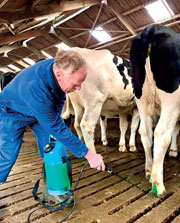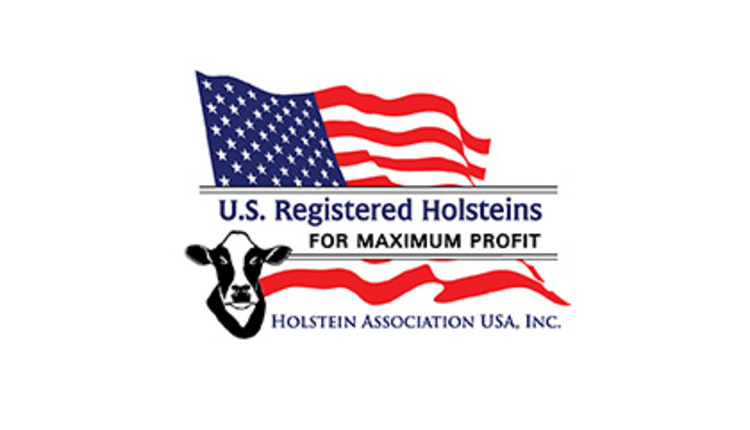

This article shows the importance and benefits of starting DD control in yearlings/premium heifers (from 12 months of age onwards) instead of starting in first lactation heifers.
Lameness
Lameness has a major impact on animal health, welfare and production. It is one of the main reasons for mature dairy cattle to be culled, next to mastitis and infertility. Combine this with the additional treatment costs and diminished milk production, and it results in major financial consequences for the dairy farmer (Willshire & Bell, 2009). The amount of scientific research focussing on lameness has increased rapidly over the last decade (Laven, 2019), and the mature dairy cow is almost always the main research subject. One of the main causes of lameness in dairy cows is Digital Dermatitis (DD) (Barker et al., 2010; Refaaj et al., 2013).
Several studies have identified first parity animals as the most susceptible to developing Digital Dermatitis (DD). The stressful experience around the first time calving, caused by environmental and metabolic changes, is suspected of causing a higher prevalence. However, the time before the first lactation is often overlooked. A small number of studies that did focus on DD in young stock found very interesting results.
Prevalence of Digital Dermatitis in young stock
A study in Alberta, Canada, studied the prevalence of DD in young stock older than 12 months. In 11 DD positive herds, the DD prevalence in young stock > 12 months was 9.9% (95% CI: 7.8 – 12.0) (Jacobs et al., 2017). In Denmark, the pre-calving heifer prevalence for DD was 15% (data from 5 herds, 4 months before calving) (Capion et al., 2009). An even higher DD prevalence for heifers was found in a study from Wisconsin, where the prevalence was 21% in 1 herd (at 21 months of age) and 30% at a mean age of 23 months (Gomez et al., 2015). This is problematic since these studies also showed the following Consequences for lactating dairy cows:
A. DD in young stock increases the risk and severity of DD after calving.
The presence of DD in young stock is associated with an increased DD prevalence in the lactation stage. When the young stock is exposed to an environment with a high DD risk, more severe DD lesions were observed after calving (Laven & Logue, 2007; Jacobs et al., 2017; Gomez et al., 2015; Holzhauer et al., 2012).
B. Lower heifer DD prevalence has a positive effect on hoof health and treatment costs in the 1st lactation.
A study by Gomez et al. monitored the percentage of animals that received treatment for DD in the 1st lactation in 3 groups: heifers with no DD in the rearing period, one DD treatment in the rearing period and several DD treatments in the rearing period. The percentage of animals that received treatment for DD in the first lactation was 13.7%, 45.6% and 67.6%, respectively (Table 1). (Gomez et al., 2015). Previous studies have shown that first lactation cows have the greatest odds for DD, which shows the importance of controlling DD in this specific group (Somers et al., 2005; Rodriguez-Lainz et al., 1999).
C. DD status as heifer impacts reproduction in the 1st lactation.
Cows without DD in the rearing period had a higher conception rate compared to cows with DD in the rearing period. The conception rate after the first insemination was monitored again in 3 groups: heifers with no DD in the rearing period, one DD treatment in the rearing period and several DD treatments in the rearing period. The results were 42.3%, 36.3% and 29.0%, respectively (Table 1) (Gomez et al., 2015), which confirms the importance of DD control in young stock once again.
Table 1: The effect of the DD status as heifer on first lactation treatment and the conception rate after the first insemination (Gomez et al., 2015).

The importance of healthy hooves in young stock
It is often hypothesized that young stock may act as DD reservoir, in which the causative agent can be transmitted to lactating cattle after calving. By implementing hoof health protocols preventing DD infections in young stock, major problems may be prevented in the lactation stage, including chronic cases of DD.
As footbathing is often not a practical application for young stock, alternative prevention measurements are needed. Individual spraying with a low-pressure sprayer or an automatic sprayer is easier, more practical and gaining in popularity compared to footbaths. Intra Hoof-Sol Spray has been specially developed as a ready to use rinsing liquid for spot spraying on the hoof. The strong adhesion provides a long contact time (over 9 hours) and reduces waste on the floor or in the manure pit (Roijackers et al., 2019).
The weekly use of Intra Hoof-Sol Spray maintains, supports and promotes healthy hooves and dermis. This product is registered with Health Canada as a Veterinary Health Product (VHP number: NN.U5D5). This usage approach and protocol provides a dual return on investment in your herd: by managing hoof challenges reducing hoof problems in young stock and providing a longer lifespan for adult dairy cows.
References
Barker, Z. E., Leach, K. A., Whay, H. R., Bell, N. J., & Main, D. C. J. (2010). Assessment of lameness prevalence and associated risk factors in dairy herds in England and Wales. Journal of dairy science, 93(3), 932-941.
Capion, N., Thamsborg, S. M., & Enevoldsen, C. (2009). Prevalence and severity of foot lesions in Danish Holstein heifers through first lactation. The Veterinary Journal, 182(1), 50-58.
Gomez, A., Cook, N. B., Socha, M. T., & Döpfer, D. (2015). First-lactation performance in cows affected by digital dermatitis during the rearing period. Journal of dairy science, 98(7), 4487-4498.
Holzhauer, M., Brummelman, B., Frankena, K., & Lam, T. J. G. M. (2012). A longitudinal study into the effect of grazing on claw disorders in female calves and young dairy cows. The Veterinary Journal, 193(3), 633-638.
Jacobs, C., Orsel, K., & Barkema, H. W. (2017). Prevalence of digital dermatitis in young stock in Alberta, Canada, using pen walks. Journal of dairy science, 100(11), 9234-9244.
Laven, R. A., & Logue, D. N. (2007). The effect of pre-calving environment on the development of digital dermatitis in first lactation heifers. The Veterinary Journal, 174(2), 310-315.
Laven, R. Foot lameness research in dairy cattle: A scientometric approach [abstract]. Proceedings of the 20th International Symposium and 12th International Conference on Lameness in Ruminants 2019; Tokyo Japan; Mar 10 – 13: 178-179.
Refaai, W., Van Aert, M., El-Aal, A. A., Behery, A. E., & Opsomer, G. (2013). Infectious diseases causing lameness in cattle with a main emphasis on digital dermatitis (Mortellaro disease). Livestock Science, 156(1-3), 53-63.
Rodriguez-Lainz, A., Melendez-Retamal, P., Hird, D. W., Read, D. H., & Walker, R. L. (1999). Farm-and host-level risk factors for papillomatous digital dermatitis in Chilean dairy cattle. Preventive veterinary medicine, 42(2), 87-97.
Roijackers D, Lammers G, Kloosterman P. (2019). Spot treatment, not pit treatment: Evaluating claw contact time under field conditions. Proceedings Lameness in Ruminants.
Somers, J. G. C. J., Frankena, K., Noordhuizen-Stassen, E. N., & Metz, J. H. M. (2005). Risk factors for digital dermatitis in dairy cows kept in cubicle houses in The Netherlands. Preventive veterinary medicine, 71(1-2), 11-21.
Willshire, J., & Bell, N. J. (2009). An economic review of cattle lameness. Cattle Practice, 17(2), 136-141.


